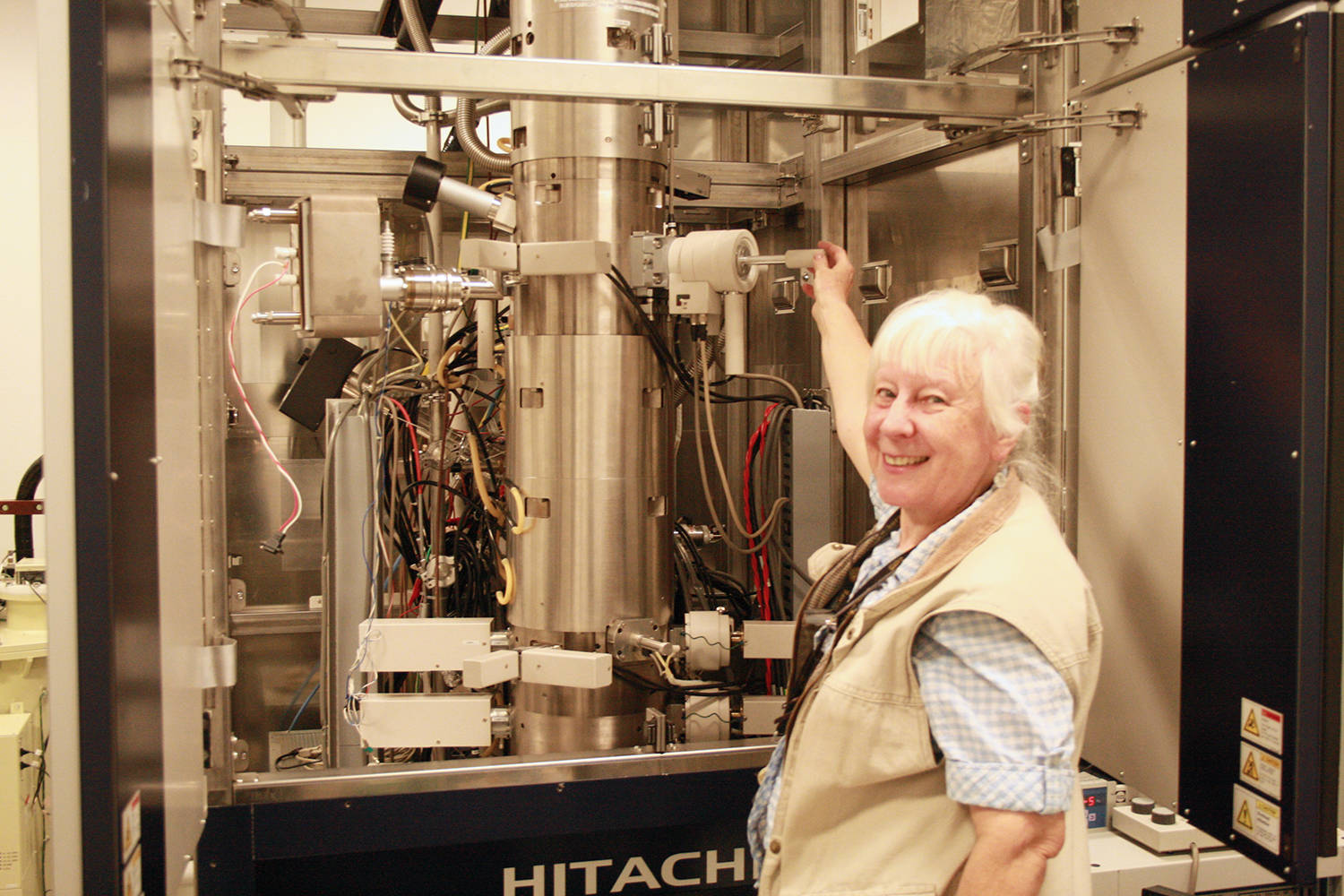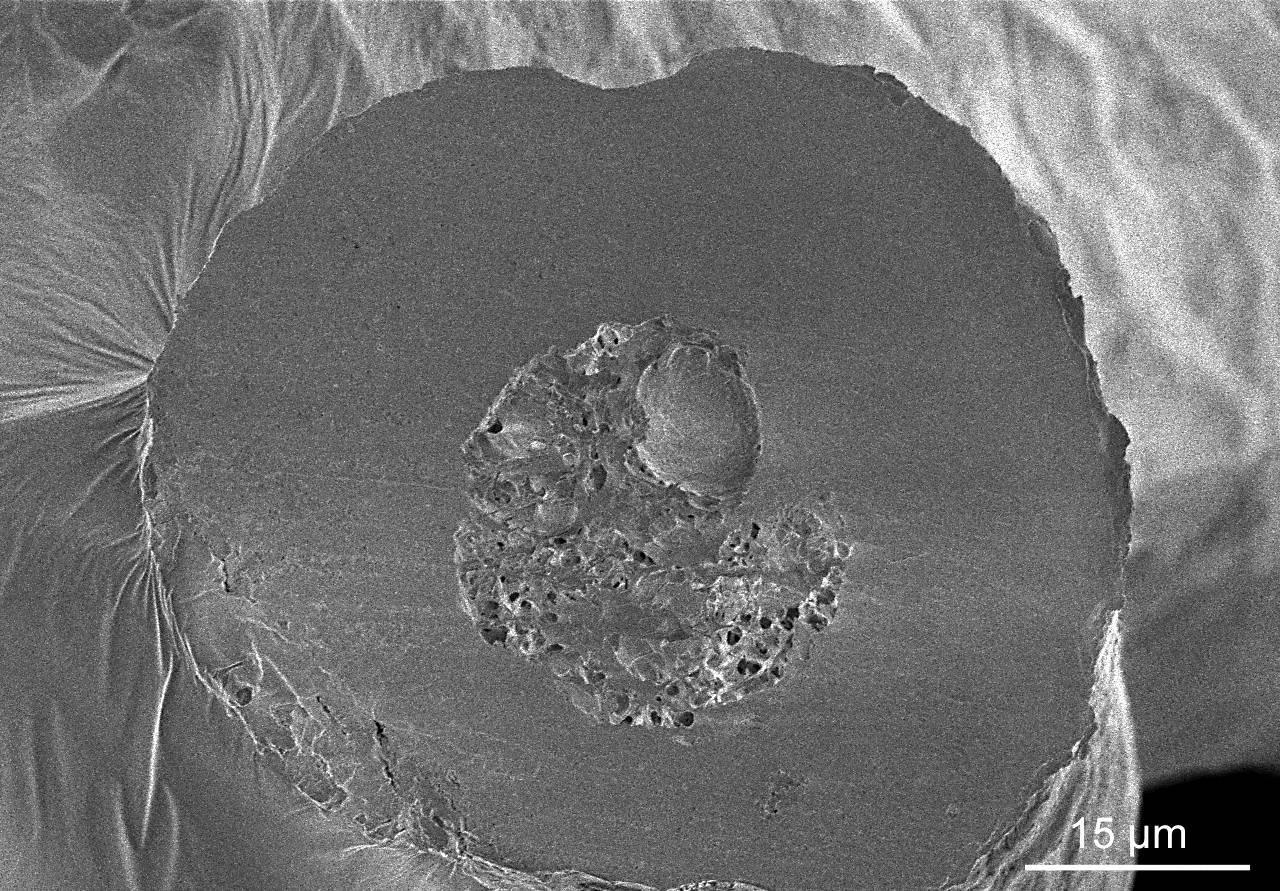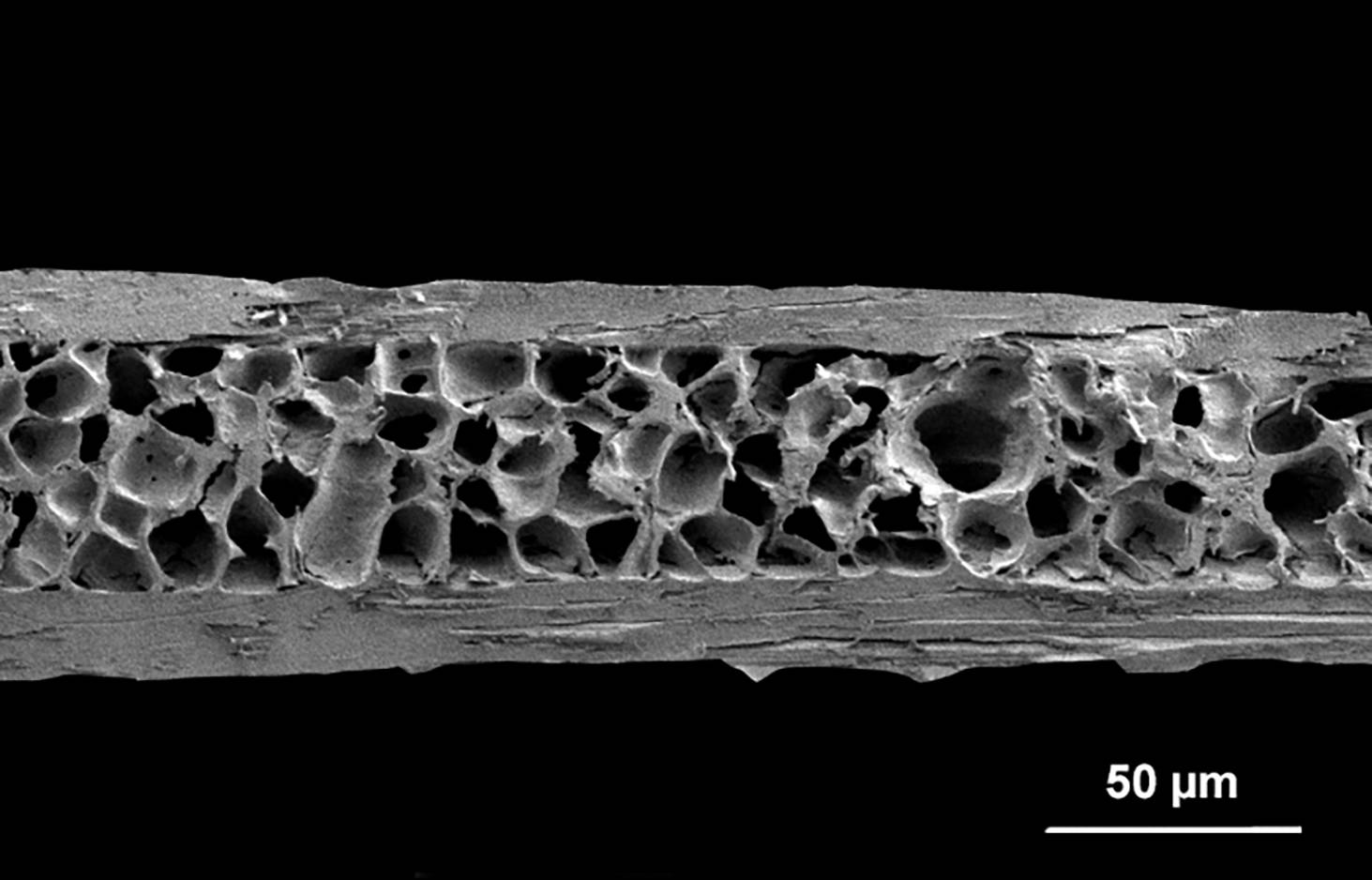In the basement of the Bob Wright building at the University of Victoria, Elaine Humphrey uses the school’s $9.2 million advanced microscope to see the smallest particles that make up the universe.
And on top of the Bob Wright centre, the observatory telescope looks out at the biggest things in our galaxy, Humphrey likes to say.
Humphrey is an expert in advanced microscopy and uses the seven-tonne, 4.5-metre tall Scanning Transmission Electron Holography Microscope (STEHM) for public and private research. It was the first microscope of its type in the world and for years after its 2013 arrival at UVic it remained the most powerful. Hitachi constructed the ultra high-resolution, ultra-stable instrument, and spent a year carefully assembling the STEHM in the carefully controlled lab in the basement of the Bob Wright Centre for Ocean, Earth and Atmospheric Sciences.
Of the thousands of projects that Humphrey has embarked on during her time in microscopy, the tale of the wooldog stands out as the greatest.
In 2004, Terry Loychuk tracked Humphrey down and brought her a blanket that he found at the Fort Langley flea market (which he calls the “Fort Langley blanket”). It was this blanket and his curiosity about it that has unlocked a new way of looking at the history of the Coast Salish and other First Nations of the Northwest, they’re introduction to, and subsequent impact of, the European colonial system.
It is widely accepted that the introduction of sheep to Washington State and Vancouver Island in the 1800s led to the demise of the wooldog, which were either killed or left to interbreed with other dogs.
When Loychuk found the blanket, he recognized it as a traditional Coast Salish artifact and visited the late Paula Gustafson (author of Salish Weaving).
(Inset photo: The cross section of a wooldog hair, right-to-left, and a mountain goat hair, . It shows the differences in the cortex/medulla of the hairsand how you can tell one from the other even if the scales are lost.)
It’s important to note that little was recorded about the wooldogs during the 1800s other than a few European references in journals and travel diaries. However, evidence now supports their role in First Nations history. The local First Peoples of the coast who had wooldogs kept the herd separate from any village settlements, so they couldn’t breed with local dogs. Doing so would compromise the genetics that produce the wooldog’s useful hair. British Navy explorer George Vancouver recorded witnessing them in the Puget Sound in his 1792 diary, wrote Royal B.C. Museum’s Grant Keddie in a 1993 article.
Gustafson suspected it was wooldog within the Fort Langley Blanket and suggested a microscopy. In effect, that led Loychuk to Humphrey, and they’ve collaborated on this wooldog and Salish blanket project ever since, Humphrey said.
Early on, Humphrey recognized mountain goat hair in the blanket but could not confirm nor deny what the other hair was without a sample. So, the wooldog mystery grew. Other materials included sheep, plant fibers including hand spun cotton, and the use of diatomaceous earth. But it was the confirmation of a wooldog sample that proved elusive.
“I contacted museums everywhere, the Smithsonian even, to find a Salish blanket [documented to have wooldog],” she said.
It took years, but she eventually located several samples. No story stands out like that of George Gibbs’.
Gibbs (1815 to 1873) was an American geologist and ethnologist who was deployed to the Washington Territory to study First Peoples where he not only encountered wooldogs, known there as woolly dogs, but took one for himself.
Gibbs named the dog Mutton. Sensing value in its pelt, he corresponded with the Smithsonian to preserve Mutton’s posthumous pelt in the famous museum. The Smithsonian replied that it received the pelt and included the coordinates as to which drawer Mutton’s dried pelt was placed in. Those letters, however, disappeared, until amateur historian Candace Wellman of Whatcom County came across them a few years ago. Wellman worked with Humphrey on the breakthrough.
The Smithsonian remained adamant they did not have a wooldog sample, Humphrey said.
Wellman contacted the Smithsonian, explaining she had a letter citing the location of the pelt and the museum curators agreed with her insistence that she travel there and uncover the pelt herself. “They warned her, it’s been 150 years, this might not be in usable condition,” Humphrey explained.
When the drawer opened they found Mutton’s pelt was still tagged with Gibbs’ original label and in pristine condition. Humphrey was soon in possession of the sample she needed. It was the first of many, as Humphrey was able to crack the code. Several of the Salish blankets were then identified as containing wooldog, leading to an understanding of coastal trading patterns, some of which were forgotten.
“Because of early explorer journals we know about more Coast Salish blankets,” Humphrey said. “Captain Cook took at least three, one of which is in Ireland, where the ship was from.”
Humphrey refers to them as the Cook Expedition blankets and is headed there this year to request a sample. She believes the British Museum in London also has one.
Semi-retired, Humphrey is jovial about her research but fierce in her investigations.
“People come to me and I see if I can [figure it out] and they pay the bill,” she smiled.
The STEHM microscope is supported by $9.2 million in funding from the government of Canada through the Canadian Foundation for Innovation, the BC Knowledge Development Fund and UVic, as well as significant in-kind support from Hitachi.
Like us on Facebook and follow us on Twitter


